On the day I received the ZWB1 filter for my Tank 007 TK-566 UV torch I found two half dead dragonflies in the road on my way to work...
#0
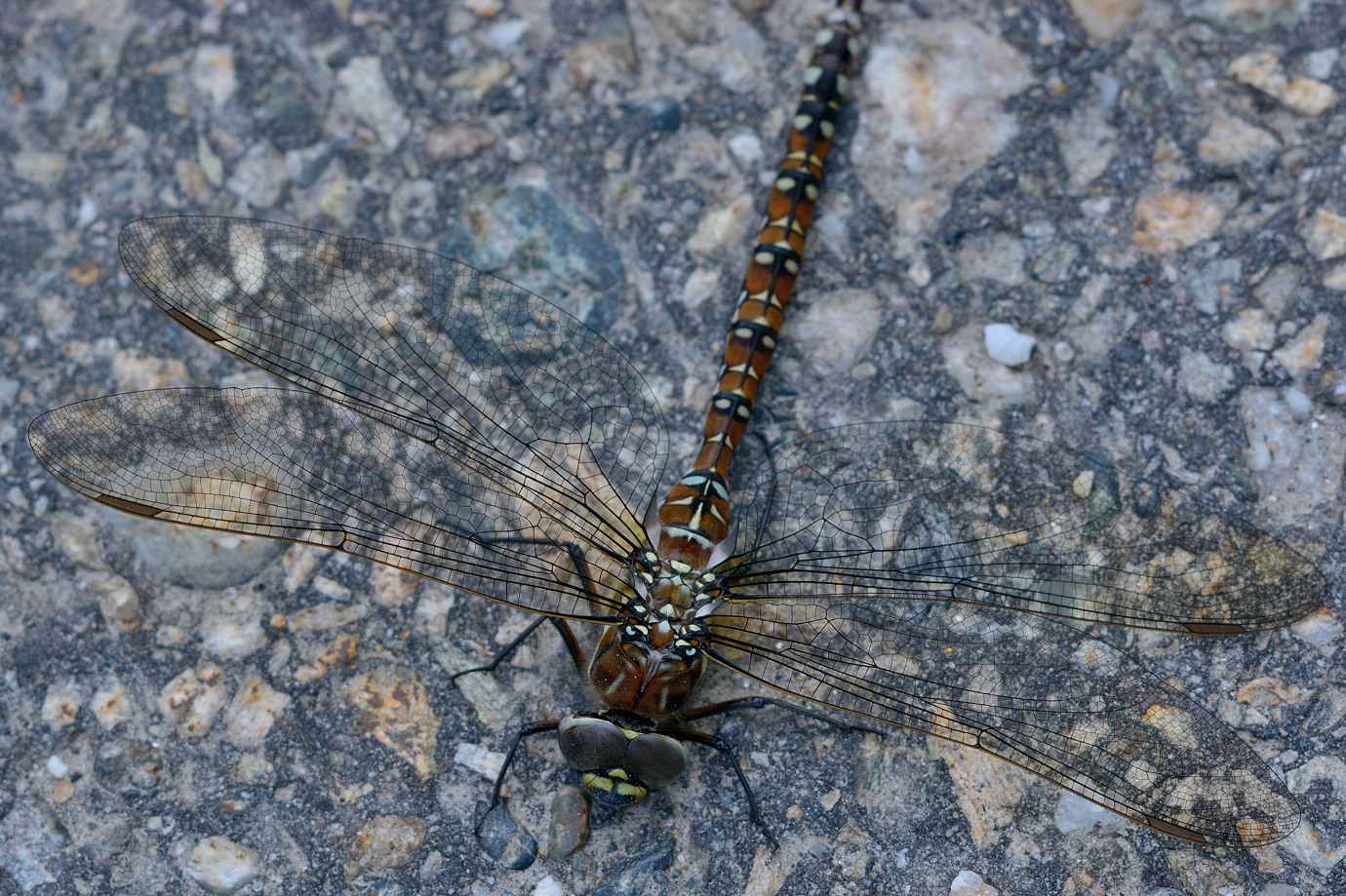
On casual inspection they looked intact, would flap their wings when stimulated, but without trying to get away. I often see dead dragonflies and juvenile dead (flat) squirrels at this location. I had a little bouquet of flowers set up in the lab for something for them to hold on to. They remained still for long periods except when initially stimulated by the UV light, but not all frames were completely sharp. The light source in the visual light frames is the overhead fluorescent tubes of the lab. I used a Nikon L39 filter on the lens. (Most of these also posted in the Ultraviolet Photography forum).
UV-induced visual fluorescence (UVIVF).
#1
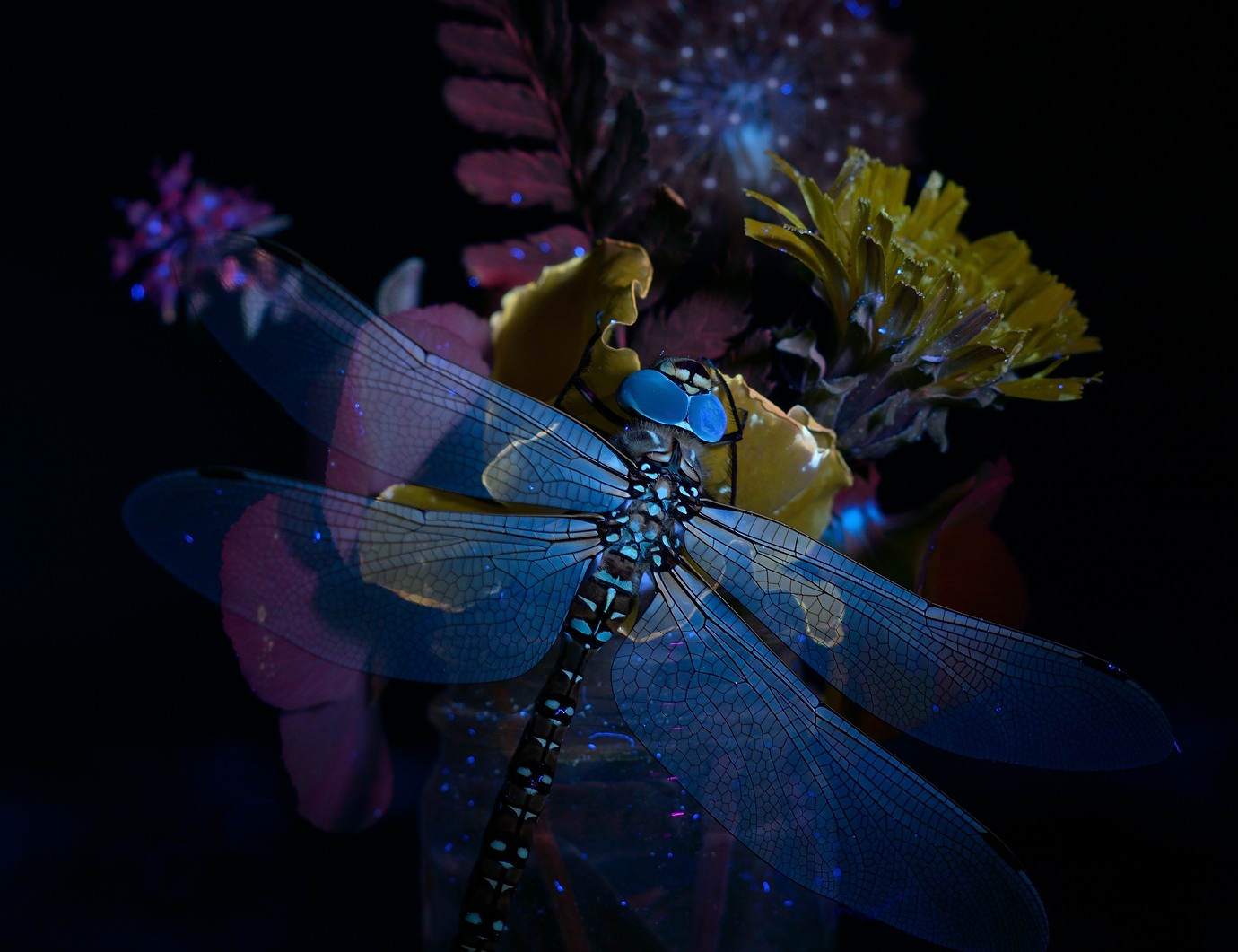
105mm f/4 AIS Micro Nikkor @ f/8 on unmodified D7100, 8sec, ISO 100
UVIVF - a closer look.
#2

105mm f/4 AIS Micro Nikkor @ f/8 on unmodified D7100, 20s, ISO 100
UVIVF - Crashed and down.
#3

105mm f/4 AIS Micro Nikkor + PN-11 @ f/8 on unmodified D7100, 8s, ISO 100.
UVIVF - forensic frontal shot (the black bench top shows blue fluorescence).
#4
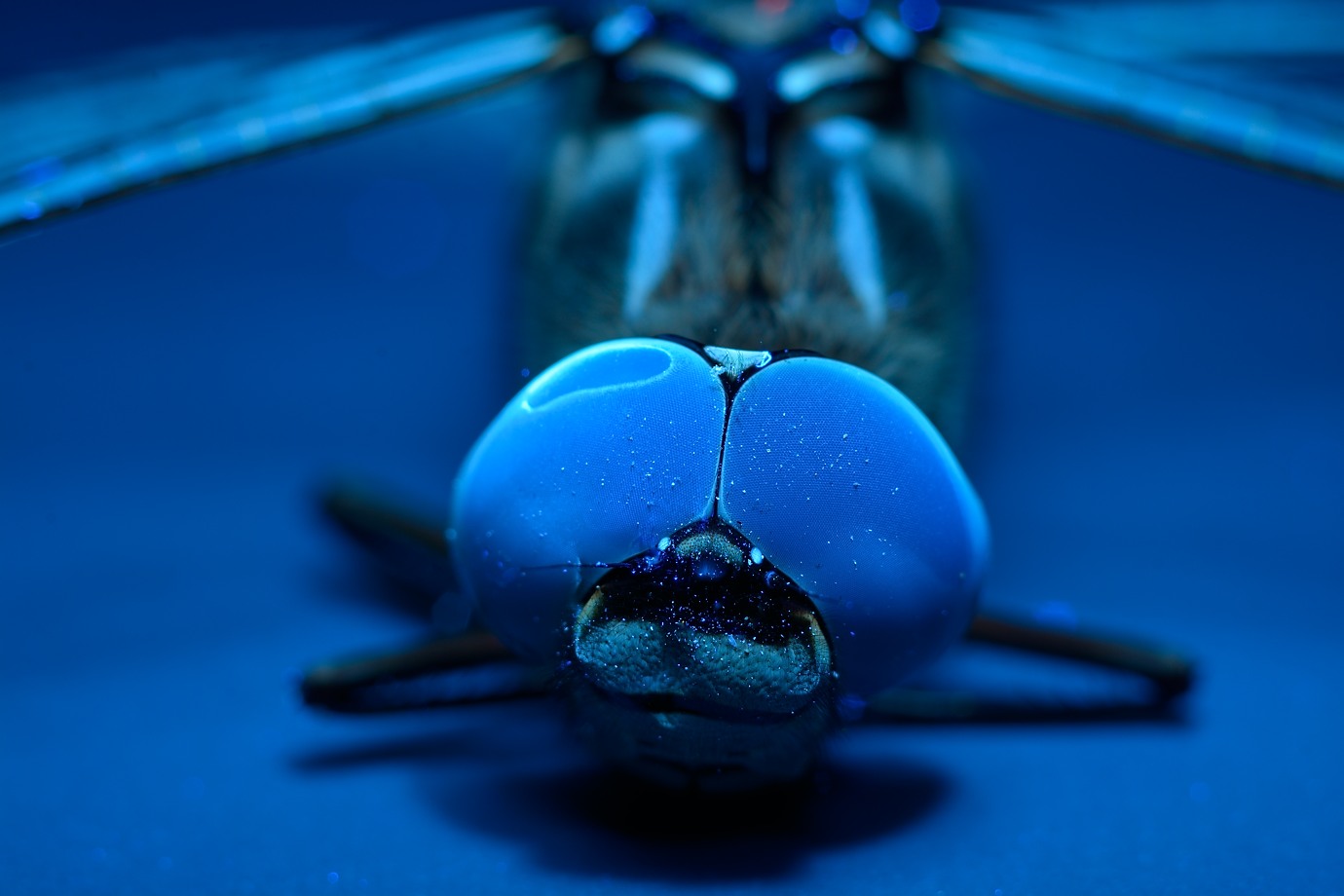
105mm f/4 AIS Micro Nikkor +PN11 @ f/8 on unmodified D7100, 25s, ISO 100.
UVIVF - forensic side shot. The stripes on the side of the body identifies it is an
Aeshna eremita (Lake Darner) according to our entomologist at the museum.
#5
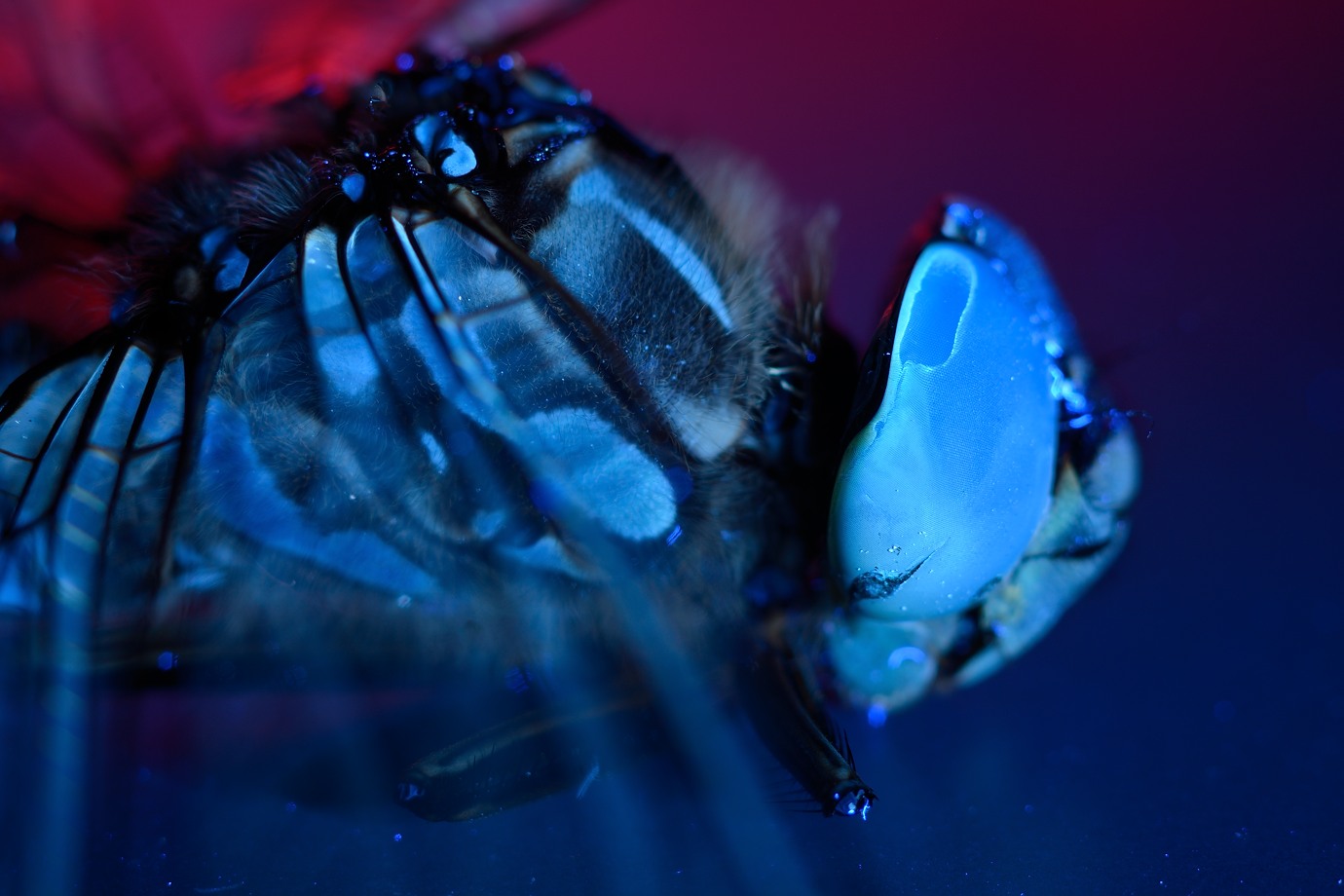
105mm f/4 AIS Micro Nikkor +PN11 @ f/8 on unmodified D7100, 20s, ISO 100.
In room light with bottom side of a fern:
#6

105mm f/4 AIS Micro Nikkor @ f/8 on unmodified D7100, 1s, ISO 100.
UVIVF parting shot
#7
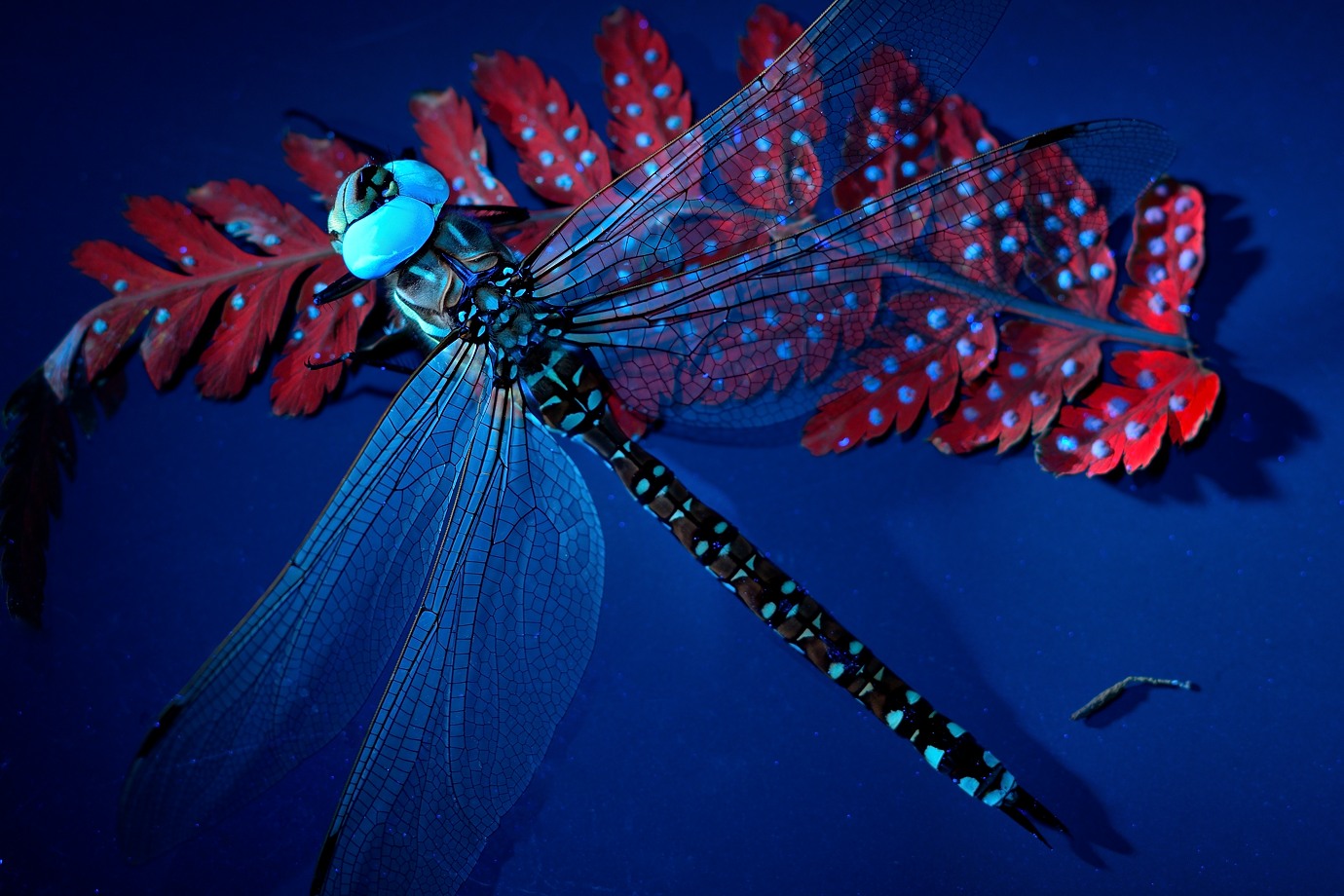
105mm f/4 AIS Micro Nikkor @ f/8 on unmodified D7100, two frames with different lighting angle averaged, each 15s, ISO 100.
-- Next day they were both dead. RIP dragonflies.
(I thought I posted this last week, but the tab must have been accidentally closed while waiting for the very slow preview to appear).